#1 Philips 3200
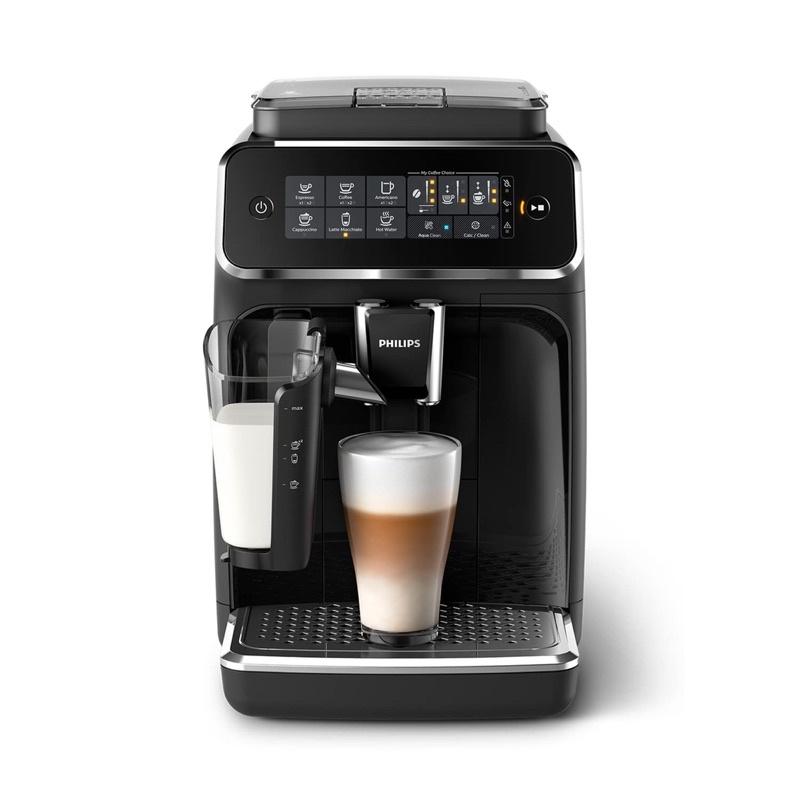
- Easy to use and navigate
- Affordable
- Compact design
#2 Philips 4300
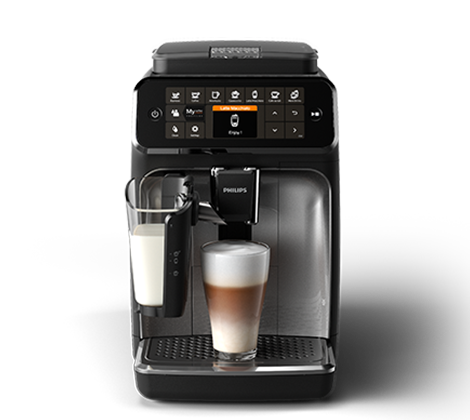
- Wide variety of drinks
- Intuitive touchscreen
- Compact with milk frothe
#3 Philips 5400

- Wide variety of drinks
- Advanced customization
- User profiles
When I first began my search for the perfect espresso machine, I had one goal in mind: to find a model that balanced quality, convenience, and customization without going overboard in terms of complexity or cost. After trying a variety of machines, I ended up narrowing my choices down to three Philips models: the 3200, 4300, and 5400. These three machines all promised a superior espresso experience, but as I began using them, I quickly realized that each offered its own strengths and limitations. In this article, I’ll share my personal experience with these machines and explain why I believe the Philips 4300 stands out as the best choice among the three.
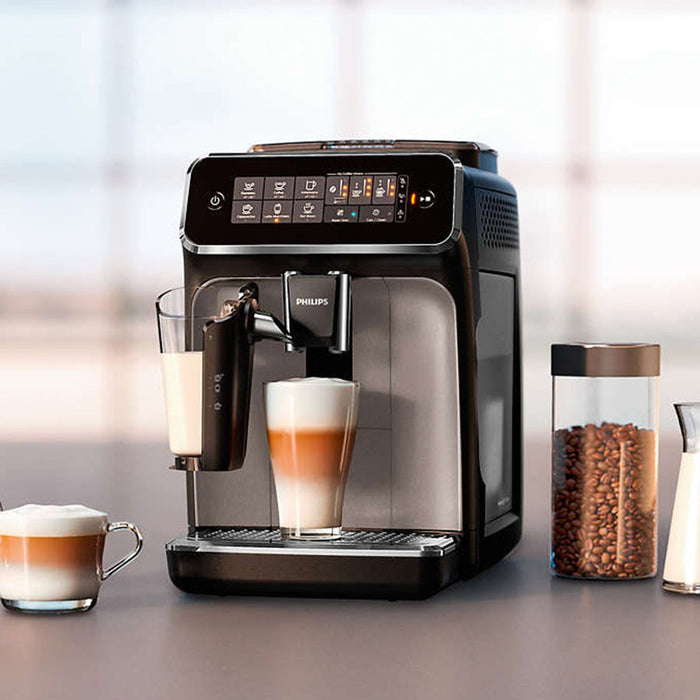
The Appeal of the Philips 3200
The Philips 3200 was my first foray into fully automatic espresso machines, and I was initially excited by its simple, user-friendly design. Right out of the box, I found it relatively easy to set up. The machine’s compact footprint meant that it didn’t take up too much space on my kitchen counter, which was a bonus since I didn’t want to crowd my limited kitchen space. The touch display, though basic, made it easy to select different drink options—espresso, coffee, cappuccino, latte macchiato, and americano.
What stood out to me initially was how simple the Philips 3200 was to use. There were fewer options to navigate, which suited me perfectly as a beginner. I was able to make a decent espresso and enjoy my first cup of coffee from the machine within minutes. The ceramic grinders were a pleasant surprise, offering a relatively consistent grind for a machine at this price point. While the coffee produced was decent, I did find that I missed more advanced features, such as the ability to tweak the milk froth or adjust the temperature settings more precisely. Still, for someone new to automatic coffee makers, the Philips 3200 offers an easy introduction to the world of espresso machines. Know about Philips company history
Getting the Most Out of the Philips 4300
After spending some time with the 3200, I decided to upgrade to the Philips 4300, as I wanted more customization and an overall better coffee experience. The Philips 4300 offered a marked improvement in both design and functionality. It still retained that same compact size, but the upgrade to a color TFT display made it feel more premium and easier to navigate. One of the standout features for me was the addition of the LatteGo milk system. This system made frothing milk incredibly easy and mess-free, which was something I didn’t get with the 3200. The milk froth produced was creamy and smooth—perfect for cappuccinos and lattes.
Another major upgrade that I appreciated was the ability to adjust the coffee strength, temperature, and volume. I could now customize my coffee exactly to my liking, which wasn’t something I could do with the Philips 3200. The two-user profile feature was also handy, allowing me and a household member to save our individual settings. This was a game-changer in terms of convenience and meant we could enjoy our coffees without having to reconfigure the machine every time.
In terms of ease of maintenance, the Philips 4300 made things incredibly simple. The LatteGo milk system was incredibly easy to clean—just two parts that I could rinse under the tap—and the machine had an automatic cleaning cycle for the coffee brewing system. Compared to the 3200, where I had to be more hands-on with cleaning, the 4300’s system saved me a lot of time and effort. All in all, the 4300 provided a great balance of customization, convenience, and performance.
Is the Philips 5400 Too Much for Me?
When I had the chance to try the Philips 5400, I couldn’t help but be impressed by its advanced features. The machine offered 12 coffee drink options, including more niche choices like flat white and café au lait. The full-color display was visually striking, and the ability to save five different user profiles was an attractive feature for large households with diverse coffee preferences. The addition of extra drink options was certainly nice, but I soon realized that, for me, it was a bit of an overkill.
Though the Philips 5400 produced excellent coffee, I didn’t find myself using many of the extra drink options. The coffee quality was comparable to what I got from the 4300, and I felt that the added complexity of the 5400 wasn’t necessary for my day-to-day coffee needs. I don’t host large gatherings frequently, so the ability to save five different profiles didn’t seem as useful. Furthermore, while the LatteGo milk system was still fantastic, I found myself not taking full advantage of the many settings the 5400 provided, which made me feel like I was paying for features I didn’t need. Learn How to fix under extracted espresso
Why the Philips 4300 Is the Sweet Spot
After spending time with all three models, the Philips 4300 emerged as the clear winner for my needs. It strikes the perfect balance between cost, performance, and user experience. The machine is easy to use but still offers enough customization options to satisfy a more discerning coffee drinker. The 4300 provides a variety of drink options without overwhelming the user, and the milk frothing system is top-notch for making everything from cappuccinos to lattes. Plus, the intuitive interface and the ability to save two user profiles make it a practical choice for a busy household.
The Most Important Consideration: Convenience
One thing I truly appreciated about the Philips 4300 was how convenient it made my daily coffee routine. With its automatic cleaning cycles, I didn’t have to spend a lot of time maintaining the machine. The fact that I could make a cappuccino in the morning, enjoy a latte in the afternoon, and simply rinse the milk system between uses made it a low-maintenance choice compared to other machines I’ve used in the past. For someone like me, who doesn’t have a lot of time to spare in the mornings but still craves quality coffee, the 4300 was a real winner.
Comparing the Machines: A Quick Breakdown
If you’re considering the Philips 3200, 4300, or 5400, here’s a quick breakdown of the differences:
- Philips 3200: The most affordable option, with five coffee drink options and basic customization. It’s a solid choice for beginners but lacks the advanced features some users might desire.
- Philips 4300: The sweet spot in terms of price and functionality, offering eight coffee drink options, superior milk frothing, and increased customization for temperature, strength, and volume. It’s perfect for someone who wants more control over their coffee but doesn’t need all the complexity of the 5400.
- Philips 5400: The most advanced option, with 12 drink choices, five user profiles, and a full-color display. While it’s packed with features, it might be more than you need if you’re a casual coffee drinker or don’t need all the extra options.
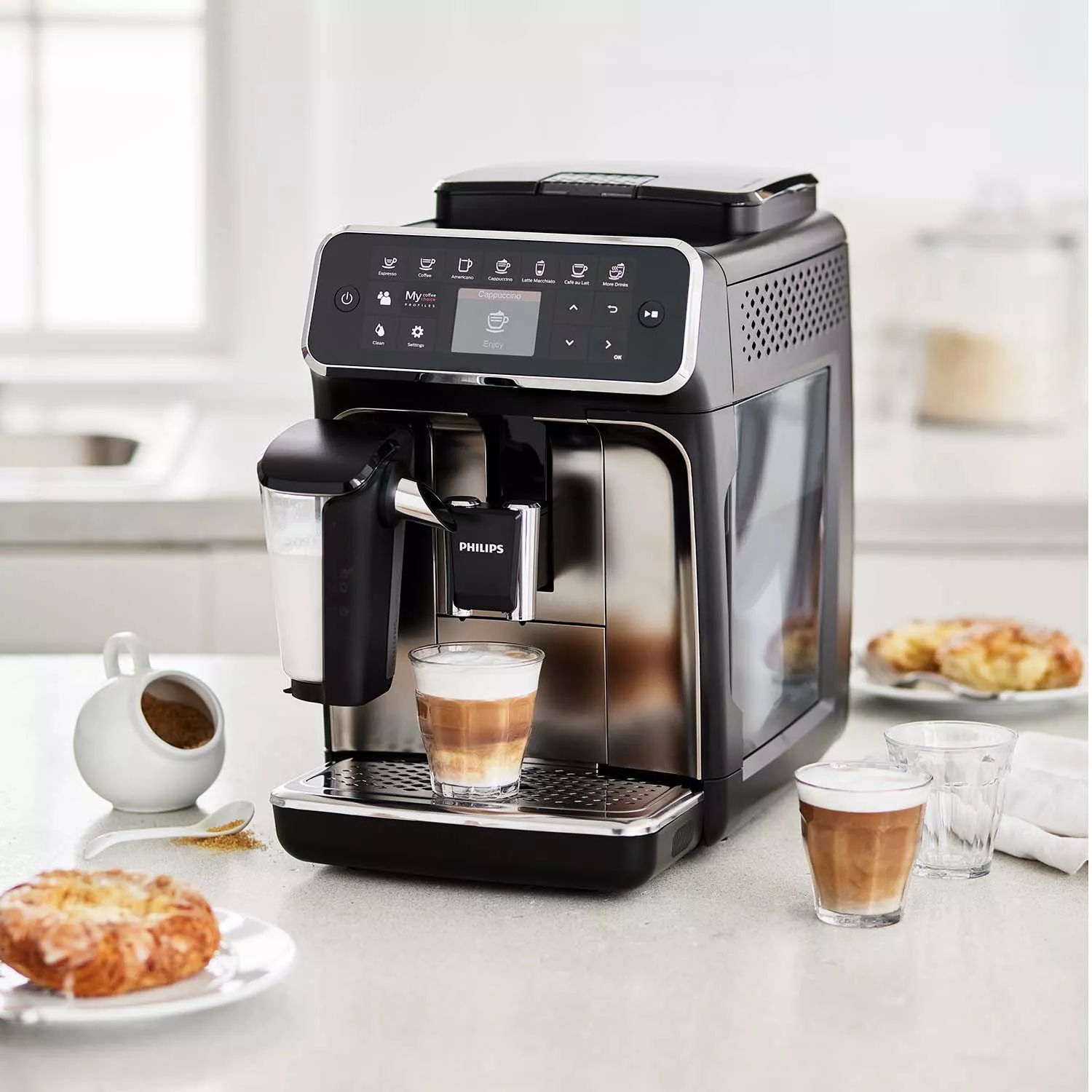
Conclusion: A Small Upgrade Makes a Big Difference
Ultimately, my time with these machines reaffirmed that sometimes, the most advanced option isn't always the best fit for every person. The Philips 4300 gave me just the right amount of functionality, ease of use, and coffee customization without overwhelming me with too many options. The coffee it brews is consistently delicious, and the simplicity of its design made it an enjoyable machine to use on a daily basis. If you’re looking for a coffee machine that provides an exceptional experience without unnecessary complexity, the Philips 4300 is a great choice.
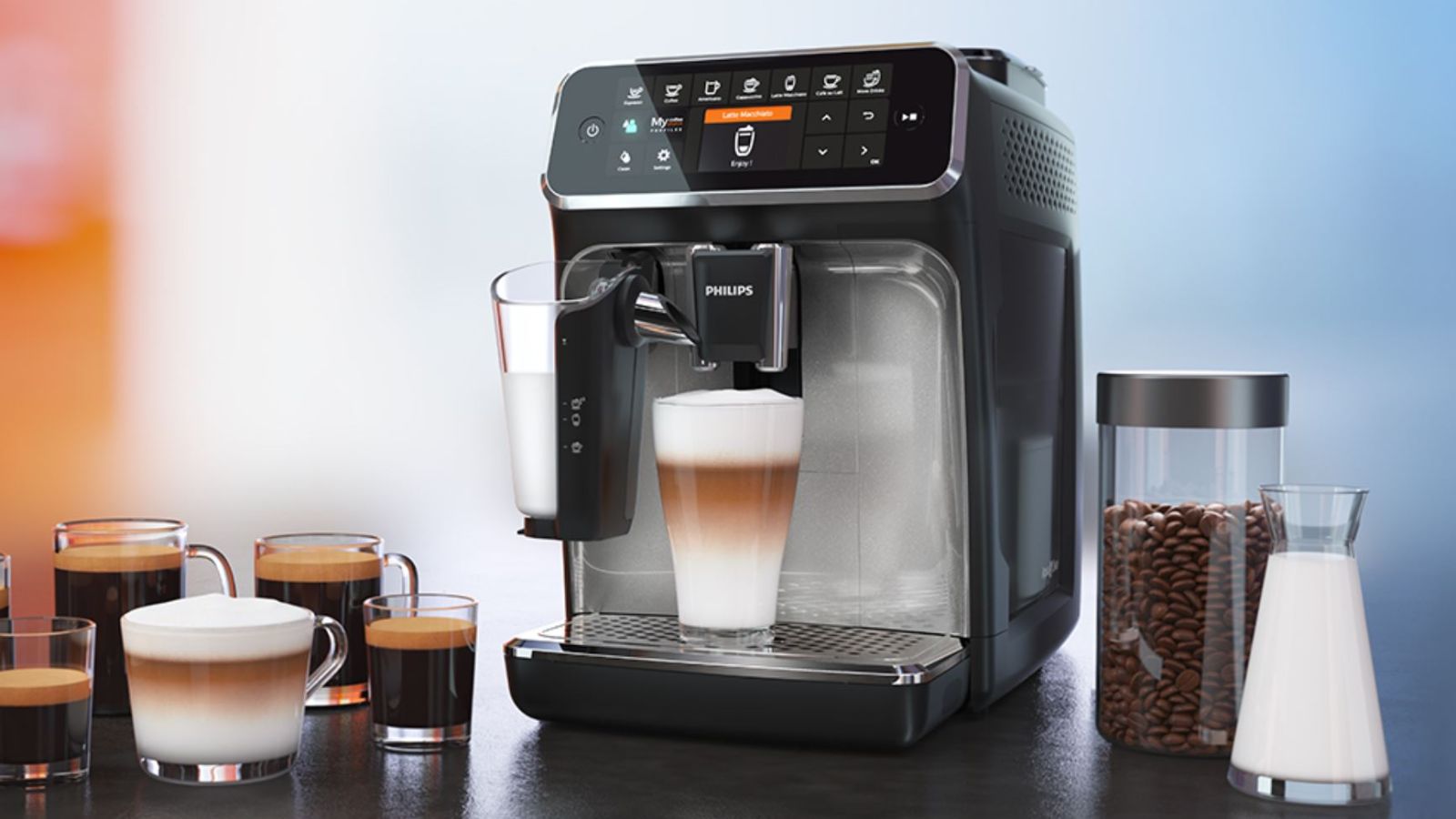
Frequently Asked Questions about the Philips 3200, 4300, and 5400
Q1: What is the difference in drink options between the Philips 3200, 4300, and 5400?
A1:
The Philips 3200 offers five drink options: espresso, coffee, cappuccino, latte macchiato, and americano. The 4300 increases the variety with eight options, adding café au lait, caffé crema, and ristretto. The Philips 5400 offers the most variety, with 12 drink options, including flat white and the ability to brew a travel mug-sized coffee.
Q2: Is the Philips 4300 difficult to use for someone new to espresso machines?
A2:
Not at all! The Philips 4300 is user-friendly with its color TFT display, which makes it easy to navigate through the coffee options and settings. The intuitive interface and automatic features (like the LatteGo milk system) help simplify the coffee-making process, even for beginners.
Q3: How easy is it to clean the Philips 4300 compared to the 3200 and 5400?
A3:
The Philips 4300 is very easy to clean, thanks to its LatteGo milk system, which consists of just two parts that can be rinsed under the tap. The machine also has an automatic cleaning cycle for the brewing system, making maintenance convenient. While the 3200 also has a simple milk system, it’s not as easy to clean as the LatteGo. The 5400 is similar to the 4300 in terms of cleaning, but with more complex features, which can take a little extra time to maintain.
Q4: Can I customize the coffee strength and temperature on all three models?
A4:
The Philips 3200 allows you to adjust the coffee strength and volume, but temperature control is not available. The 4300 offers more customization options, including temperature, strength, and volume adjustments, making it ideal for those who want more control over their coffee. The 5400 also allows customization for strength, volume, and temperature, but it has more profiles and settings, which might feel overwhelming for someone who prefers simplicity.
Q5: What are the main reasons to choose the Philips 4300 over the 3200 or 5400?
A5:
The Philips 4300 strikes a great balance between features and ease of use. It offers a good variety of drink options, customization features (like strength and temperature adjustments), and the easy-to-use LatteGo milk frothing system. It’s more affordable than the 5400 and provides just enough advanced features without being too complicated, making it the best option for most users.
Q6: How does the Philips 5400 compare in terms of coffee quality?
A6:
The Philips 5400 produces excellent coffee, comparable to the 4300 in terms of taste and quality. The difference lies mainly in the variety of drink options and the advanced settings it offers. While the extra features are nice, the 5400's coffee quality is not significantly superior to the 4300, making it a better option for those who value variety but not necessarily a better coffee experience.
Q7: How long does it take to brew a cup of coffee with these machines?
A7:
All three machines have fast brew times, usually taking around 30 seconds to a minute depending on the drink you select. The 4300 and 5400, with their advanced milk frothing systems, may take a few extra seconds for drinks like cappuccinos or lattes, but overall, they are quick and efficient.
Q8: Can I make a large coffee, like a travel mug, with the Philips 3200, 4300, and 5400?
A8:
The Philips 3200 and 4300 can brew larger cups by adjusting the volume settings, but they don’t have a specific “travel mug” function. The Philips 5400, however, includes a travel mug function that allows you to brew larger quantities of coffee in a single cup, making it more convenient for those who need a bigger drink.
Q9: Is the Philips 4300 noisy during operation?
A9:
No, the Philips 4300 operates fairly quietly compared to other espresso machines in its range. The noise mainly comes from the grinding process, but it’s not disruptive. The 5400 and 3200 are similarly quiet, so noise won’t be an issue with any of these models.
Q10: How long will the Philips 4300 last before needing major maintenance?
A10:
With regular maintenance, such as descaling and cleaning the milk system, the Philips 4300 should last for many years. The AquaClean filter allows you to brew up to 5,000 cups without descaling, which is a great feature for long-term maintenance. As with any coffee machine, its lifespan depends on usage and care, but overall, the 4300 is designed for durability.
